Abstract
In order to study the possible role of the T-lymphocyte growth factor, Interleukin 2 (IL-2), and/or of the IL-2 receptor in the autonomous growth of leukaemic cells, 15 mouse leukaemic cell lines of various aetiology were analyzed for (i) IL-2 receptor expression and (ii) for the capacity to secrete IL-2. Several but not all of the cell lines tested were IL-2 receptor positive. The cells constitutively expressing IL-2 receptors at their surface could not be stimulated to secrete IL-2. Cell producing and secreting IL-2 did not express detectable amounts of IL-2 receptors at their surface. It has been demonstrated that proliferation of the leukaemic cells was independent of exogenous IL-2. The monoclonal anti-IL-2 receptor antibody AMT-13 inhibited IL-2 dependent proliferation of activated normal T-lymphocytes but failed to inhibit the growth of IL-2 receptor expressing leukaemic cells. The results argue against the autocrine stimulation hypothesis but do not exclude the possibility of involvement of functionally altered IL-2 receptors on autonomous cell growth.
Full text
PDF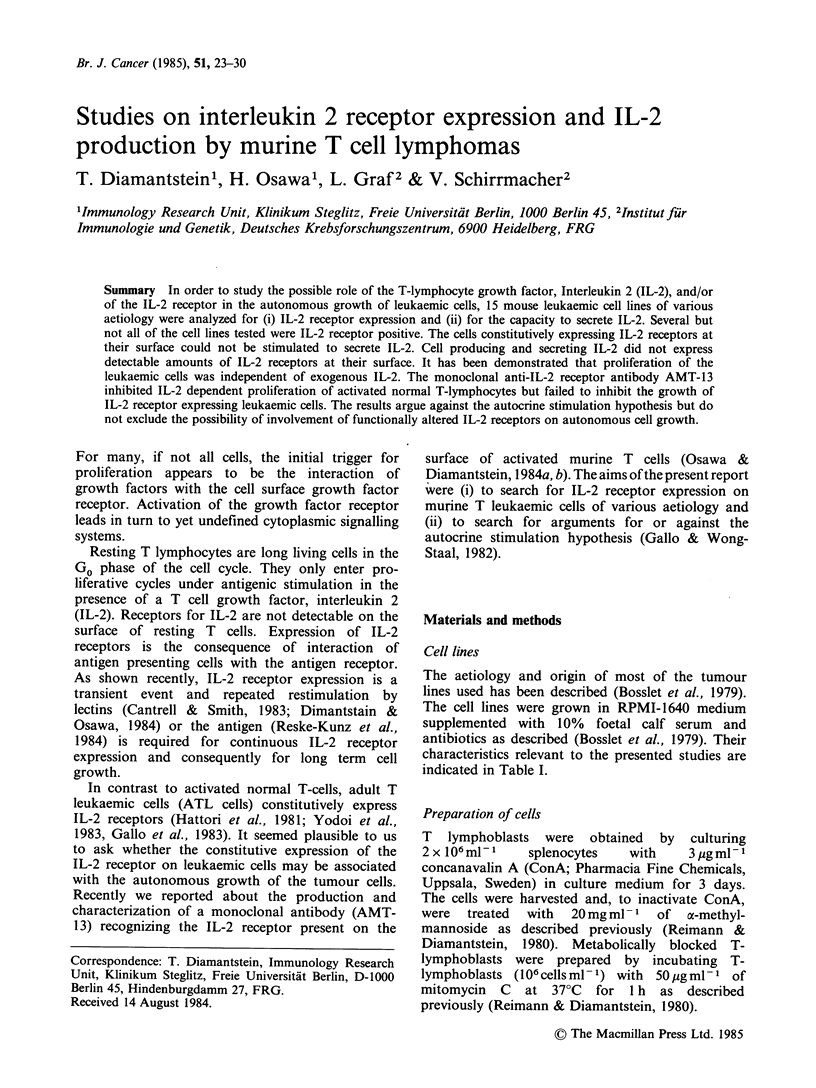
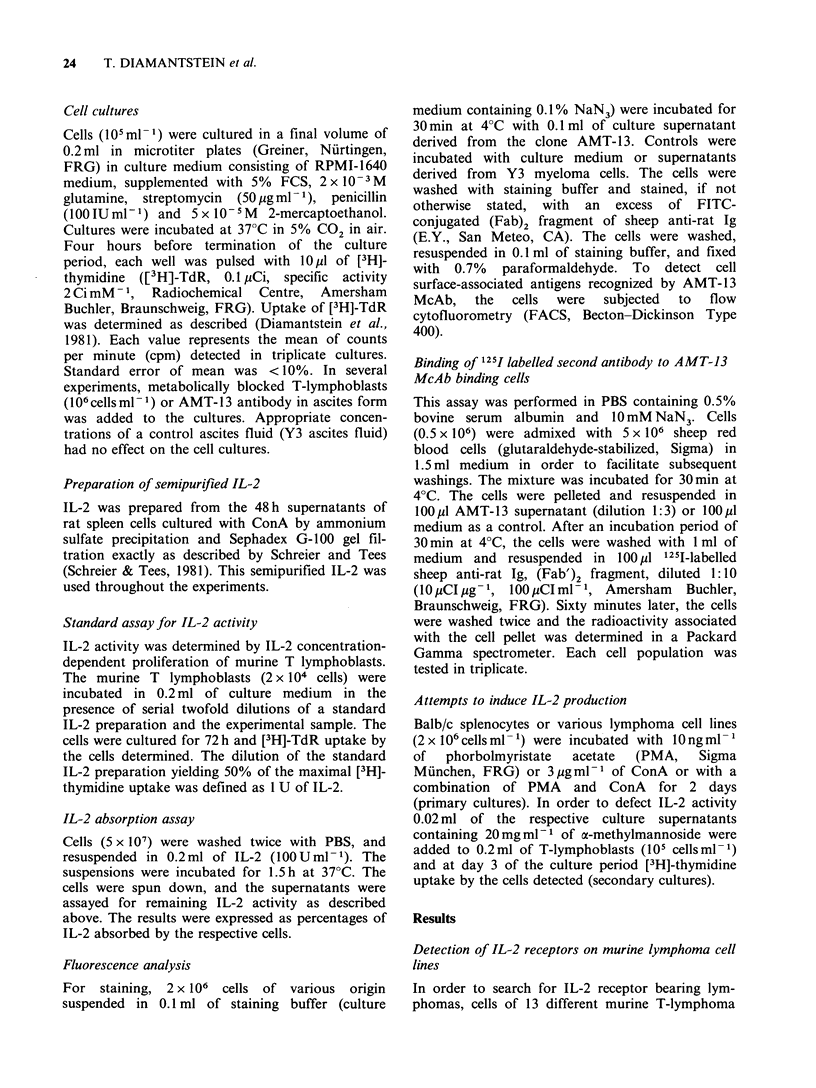
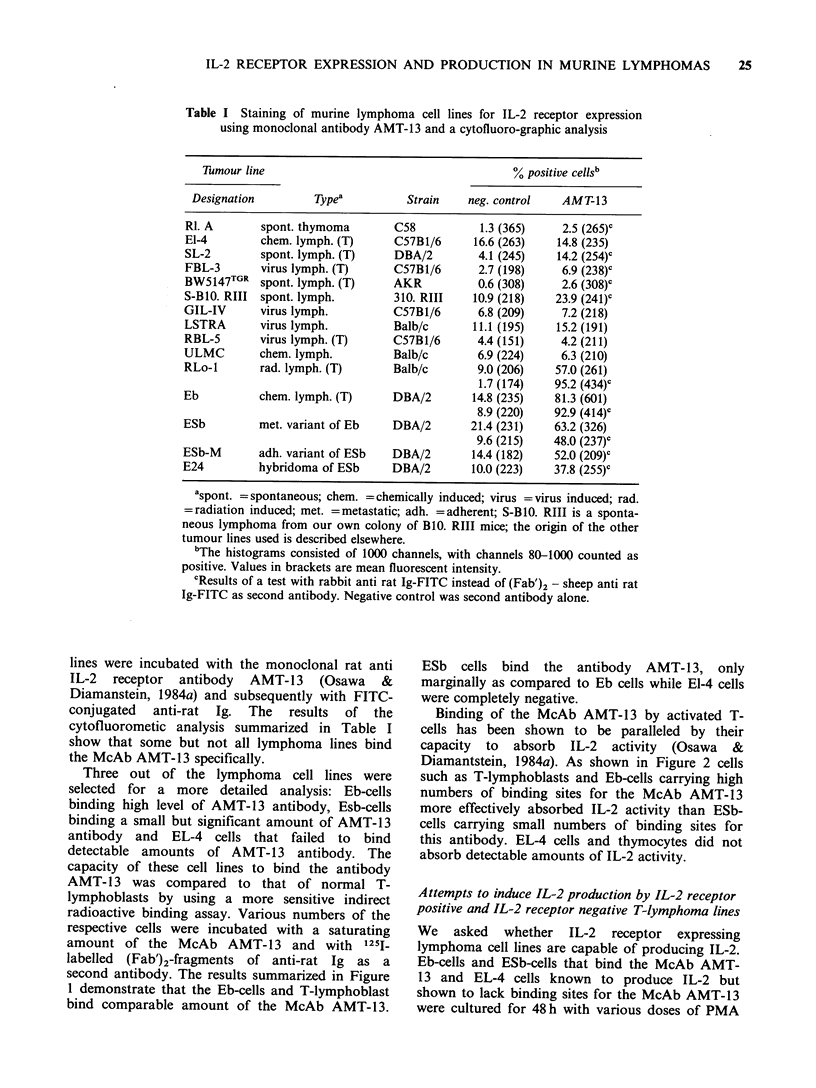
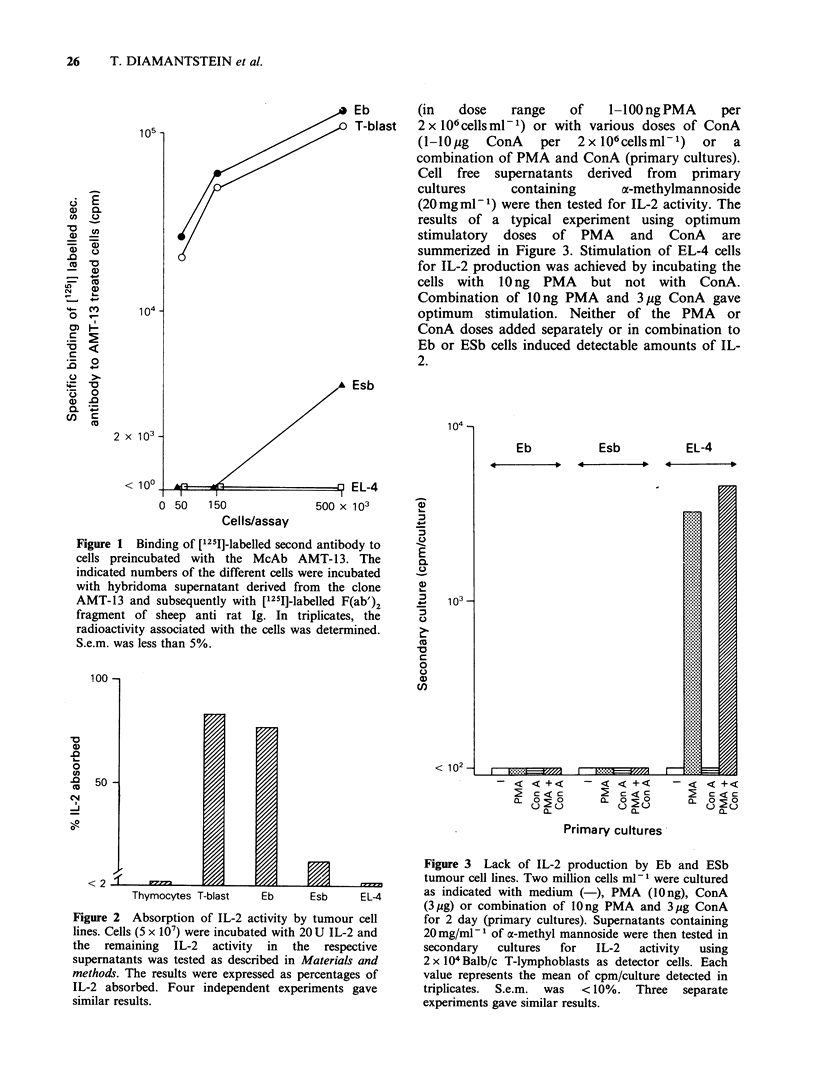
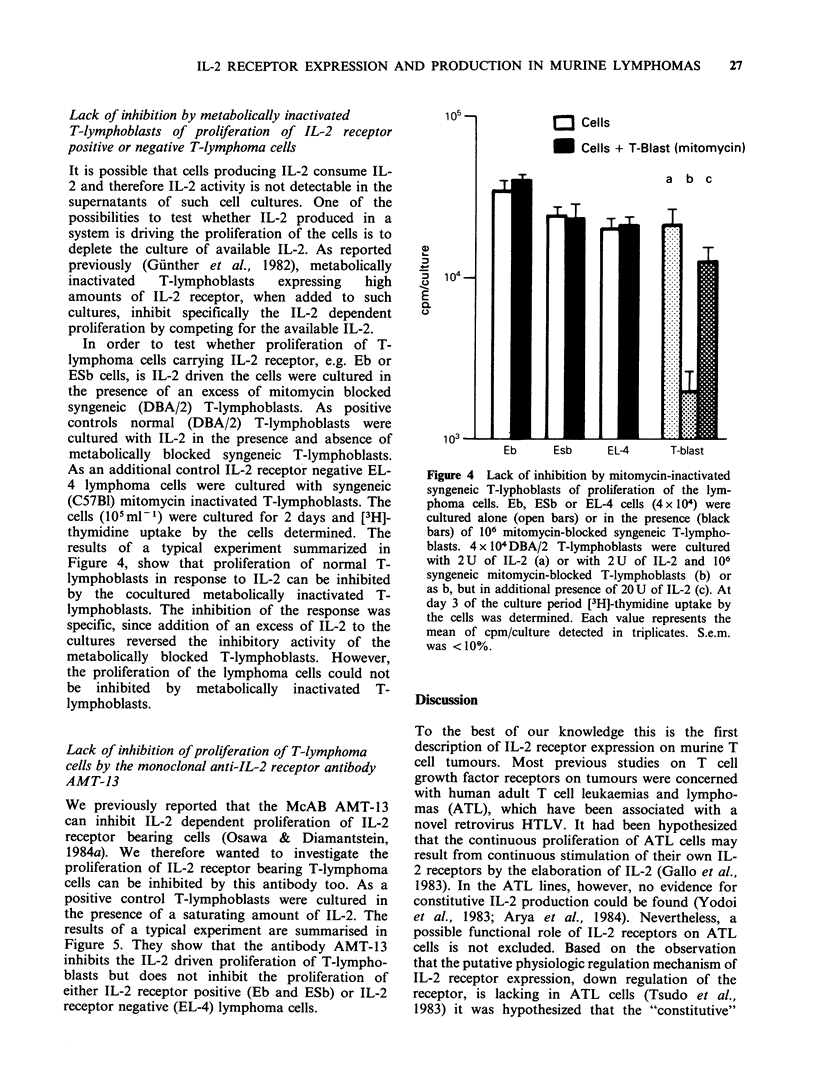
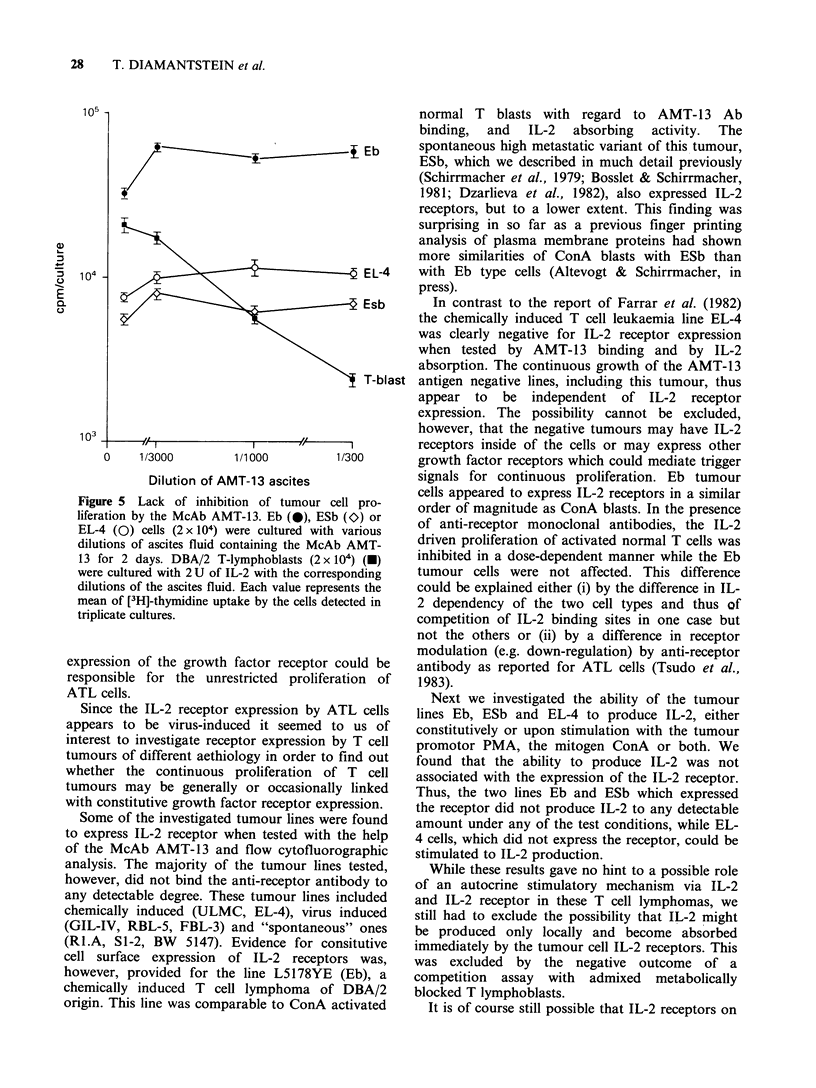
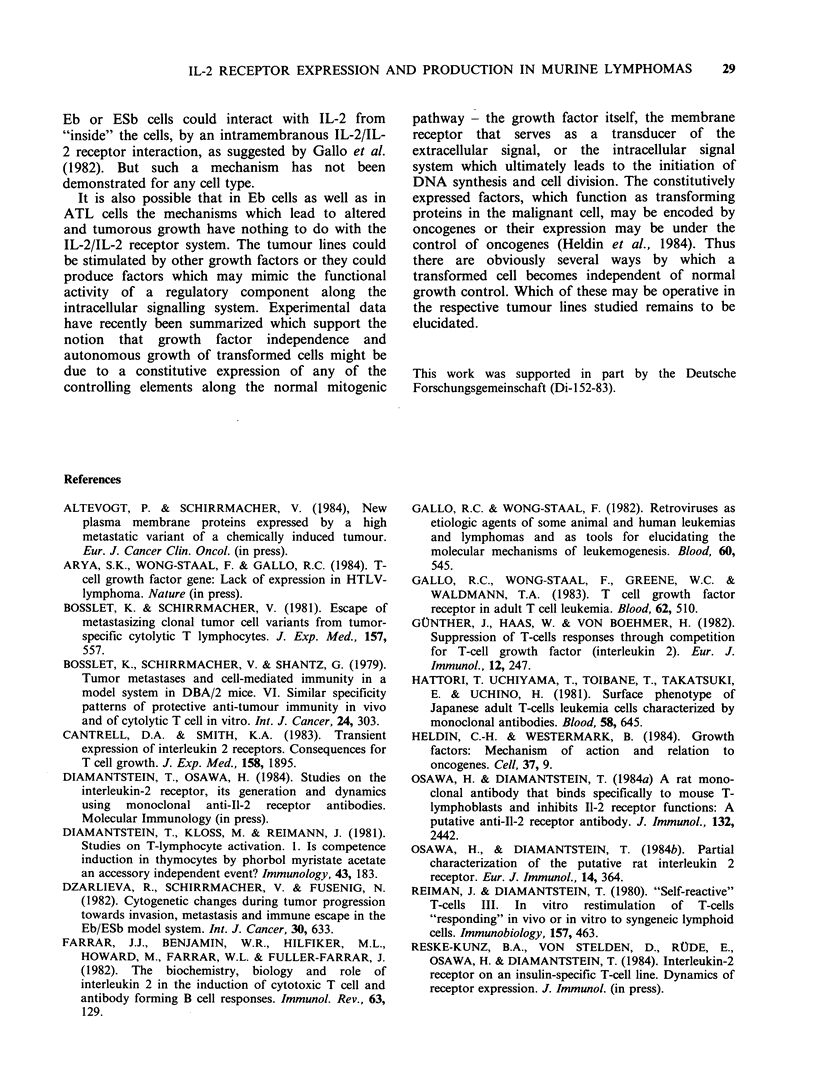
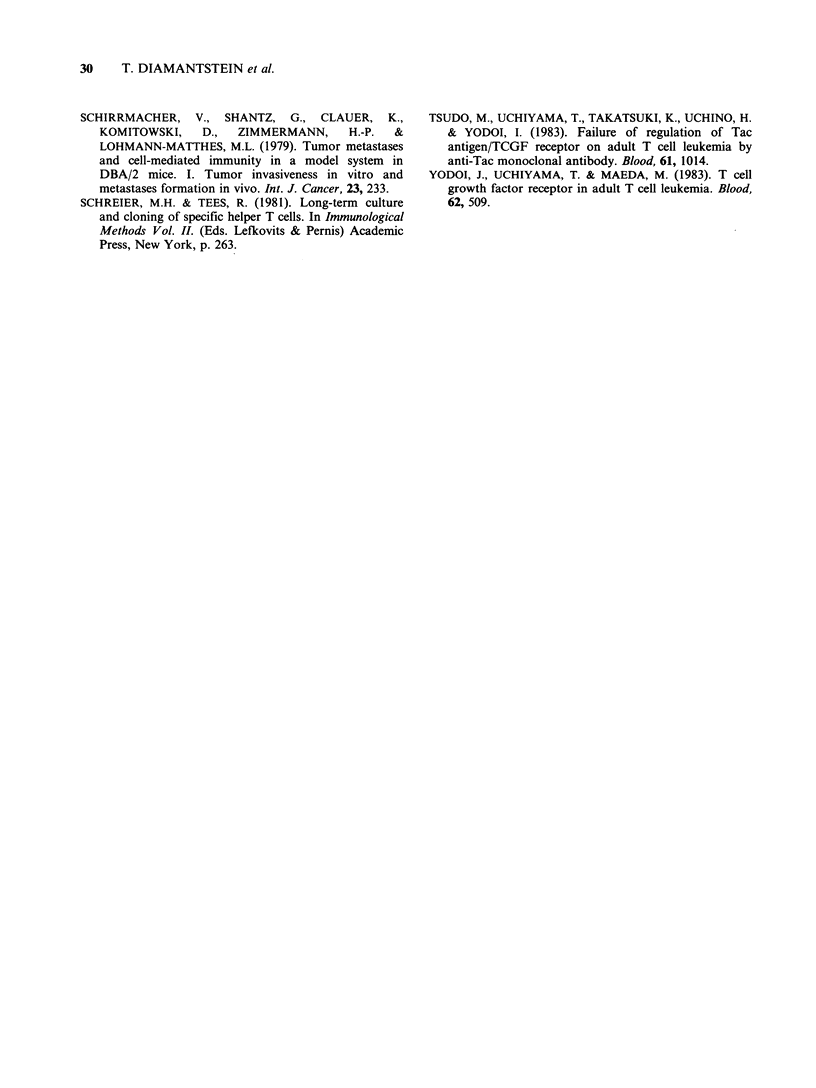
Selected References
These references are in PubMed. This may not be the complete list of references from this article.
- Bosslet K., Schirrmacher V. Escape of metastasizing clonal tumor cell variants from tumor-specific cytolytic T lymphocytes. J Exp Med. 1981 Aug 1;154(2):557–562. doi: 10.1084/jem.154.2.557. [DOI] [PMC free article] [PubMed] [Google Scholar]
- Bosslet K., Schirrmacher V., Shantz G. Tumor metastases and cell-mediated immunity in a model system in DBA/2 mice. VI. Similar specificity patterns of protective anti-tumor immunity in vivo and of cytolytic T cells in vitro. Int J Cancer. 1979 Sep 15;24(3):303–313. doi: 10.1002/ijc.2910240306. [DOI] [PubMed] [Google Scholar]
- Cantrell D. A., Smith K. A. Transient expression of interleukin 2 receptors. Consequences for T cell growth. J Exp Med. 1983 Dec 1;158(6):1895–1911. doi: 10.1084/jem.158.6.1895. [DOI] [PMC free article] [PubMed] [Google Scholar]
- Diamantstein T., Klos M., Reimann J. Studies on T-lymphocyte activation. I. Is competence inductions in thymocytes by phorbol myristate acetate, an accessory cell-independent event? Immunology. 1981 May;43(1):183–189. [PMC free article] [PubMed] [Google Scholar]
- Dzarlieva R., Schirrmacher V., Fusenig N. F. Cytogenetic changes during tumor progression towards invasion, metastasis and immune escape in the Eb/ESb model system. Int J Cancer. 1982 Nov 15;30(5):633–642. doi: 10.1002/ijc.2910300514. [DOI] [PubMed] [Google Scholar]
- Farrar J. J., Benjamin W. R., Hilfiker M. L., Howard M., Farrar W. L., Fuller-Farrar J. The biochemistry, biology, and role of interleukin 2 in the induction of cytotoxic T cell and antibody-forming B cell responses. Immunol Rev. 1982;63:129–166. doi: 10.1111/j.1600-065x.1982.tb00414.x. [DOI] [PubMed] [Google Scholar]
- Gallo R. C., Wong-Staal F. Retroviruses as etiologic agents of some animal and human leukemias and lymphomas and as tools for elucidating the molecular mechanism of leukemogenesis. Blood. 1982 Sep;60(3):545–557. [PubMed] [Google Scholar]
- Günther J., Haas W., Von Boehmer H. Suppression of T cell responses through competition for T cell growth factor (interleukin 2). Eur J Immunol. 1982 Mar;12(3):247–249. doi: 10.1002/eji.1830120315. [DOI] [PubMed] [Google Scholar]
- Hattori T., Uchiyama T., Toibana T., Takatsuki K., Uchino H. Surface phenotype of Japanese adult T-cell leukemia cells characterized by monoclonal antibodies. Blood. 1981 Sep;58(3):645–647. [PubMed] [Google Scholar]
- Heldin C. H., Westermark B. Growth factors: mechanism of action and relation to oncogenes. Cell. 1984 May;37(1):9–20. doi: 10.1016/0092-8674(84)90296-4. [DOI] [PubMed] [Google Scholar]
- Reimann J., Diamantstein T. "Self-reactive" T cells. III. In vitro restimulation of T cells, "responding" in vivo or in vitro to syngeneic lymphoid cells. Immunobiology. 1980 Dec;157(4-5):463–473. doi: 10.1016/S0171-2985(80)80015-5. [DOI] [PubMed] [Google Scholar]
- Schirrmacher V., Shantz G., Clauer K., Komitowski D., Zimmermann H. P., Lohmann-Matthes M. L. Tumor metastases and cell-mediated immunity in a model system in DBA/2 mice. I. Tumor invasiveness in vitro and metastasis formation in vivo. Int J Cancer. 1979 Feb;23(2):233–244. doi: 10.1002/ijc.2910230215. [DOI] [PubMed] [Google Scholar]
- Tsudo M., Uchiyama T., Uchino H., Yodoi J. Failure of regulation of Tac antigen/TCGF receptor on adult T-cell leukemia cells by anti-Tac monoclonal antibody. Blood. 1983 May;61(5):1014–1016. [PubMed] [Google Scholar]
- Yodoi J., Uchiyama T., Maeda M. T-cell growth factor receptor in adult T-cell leukemia. Blood. 1983 Aug;62(2):509–511. [PubMed] [Google Scholar]


